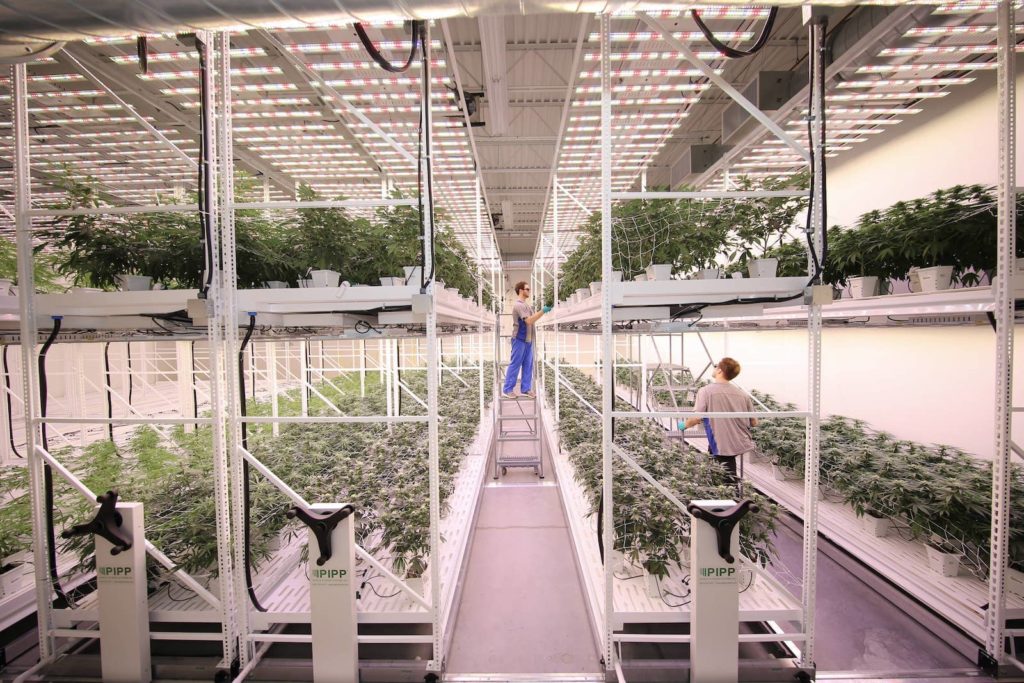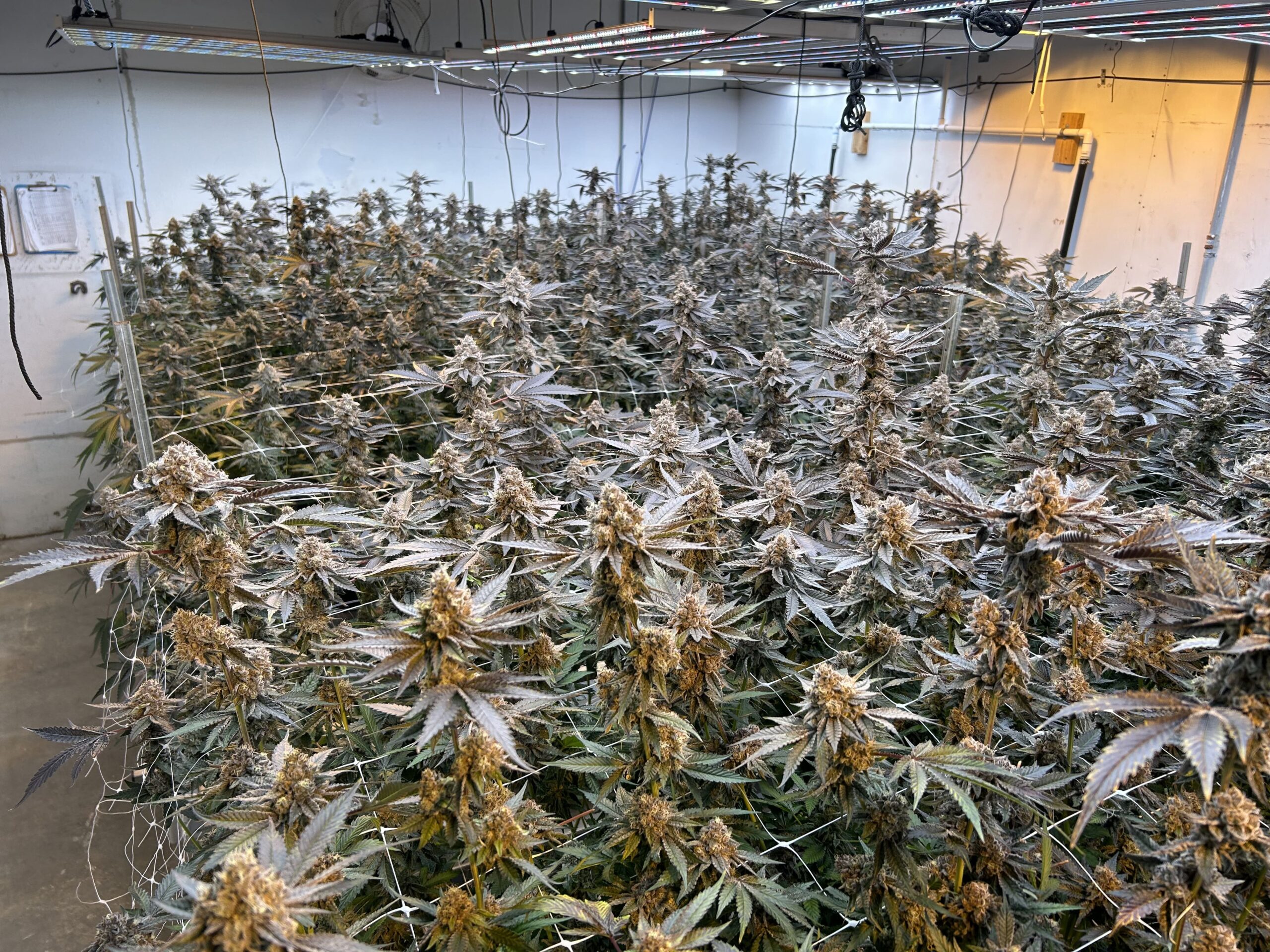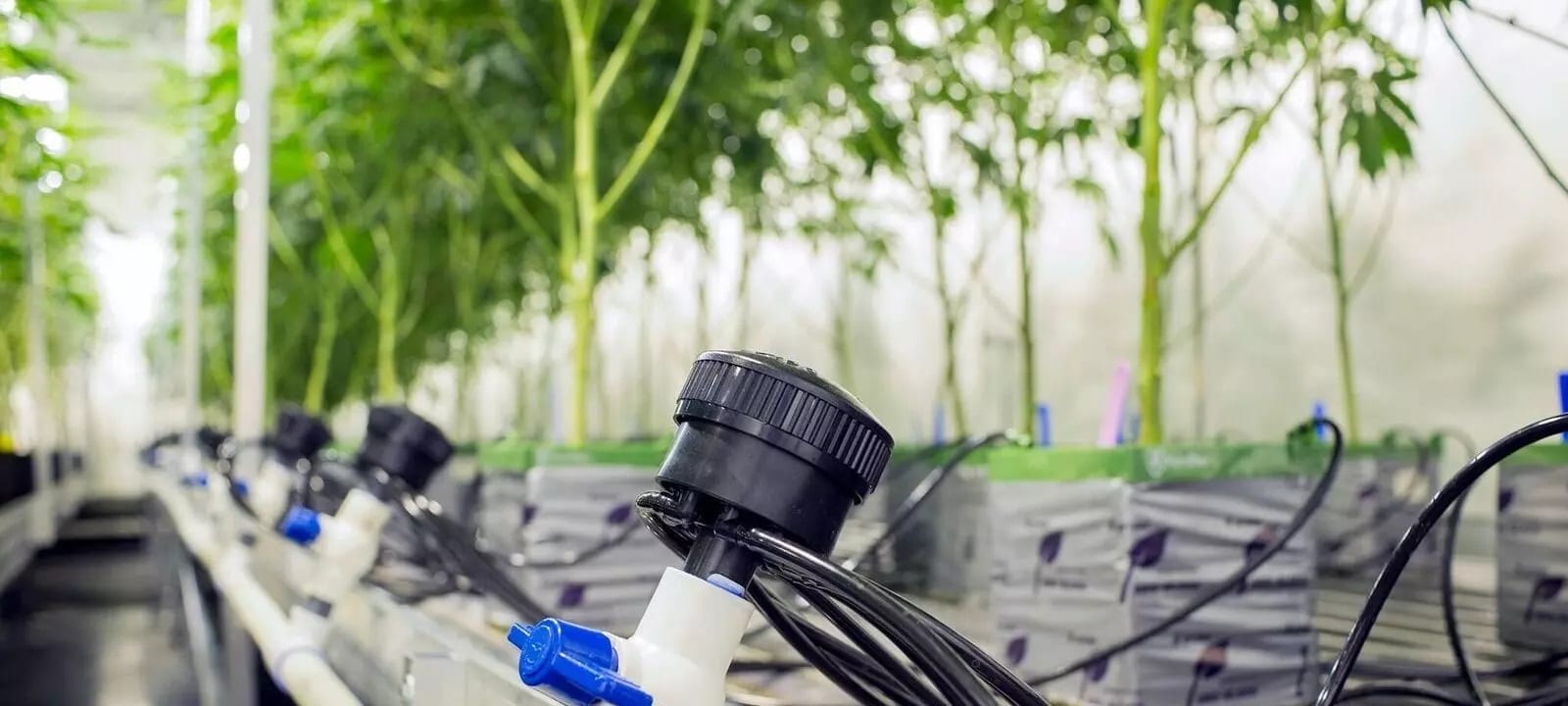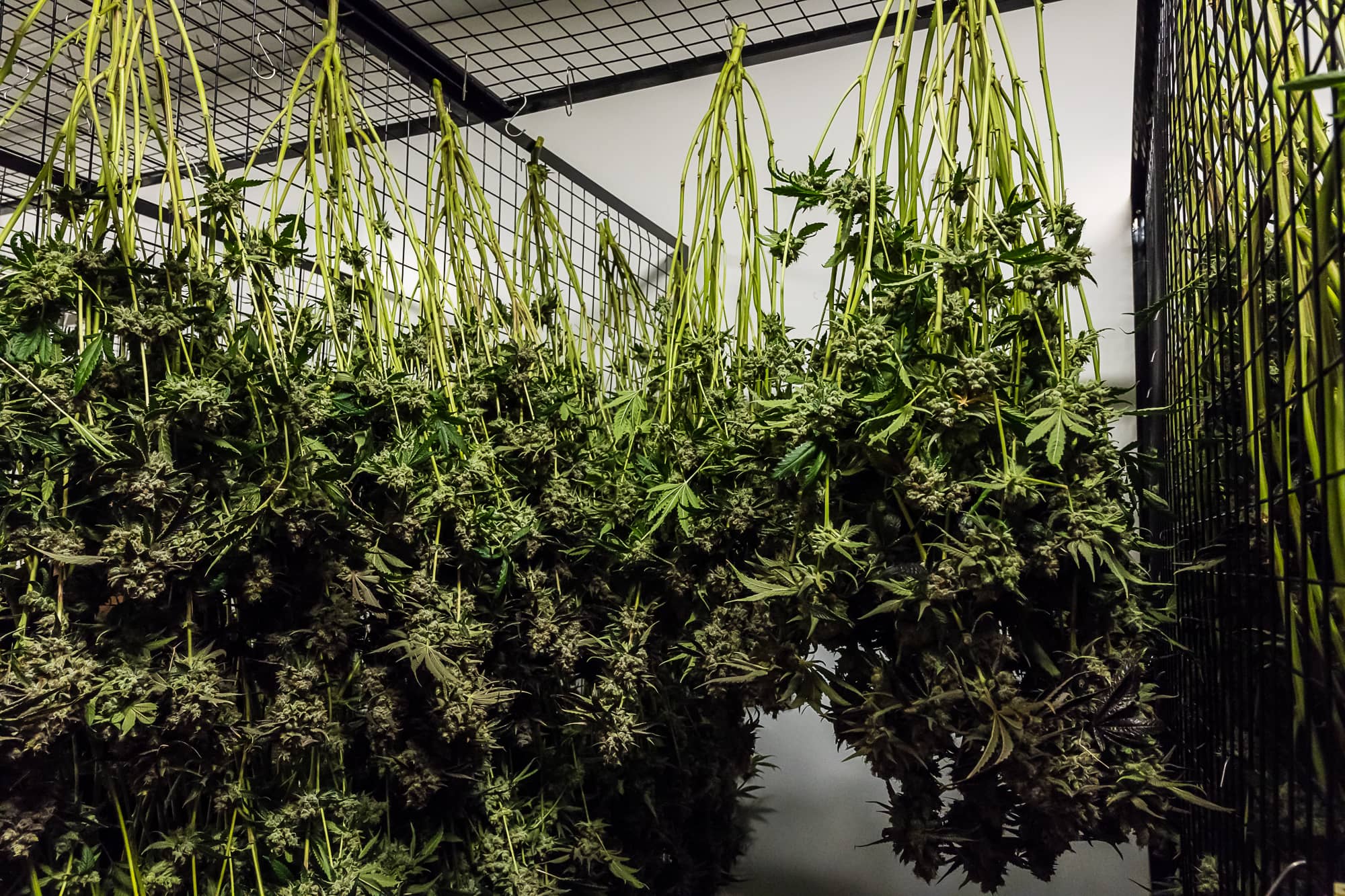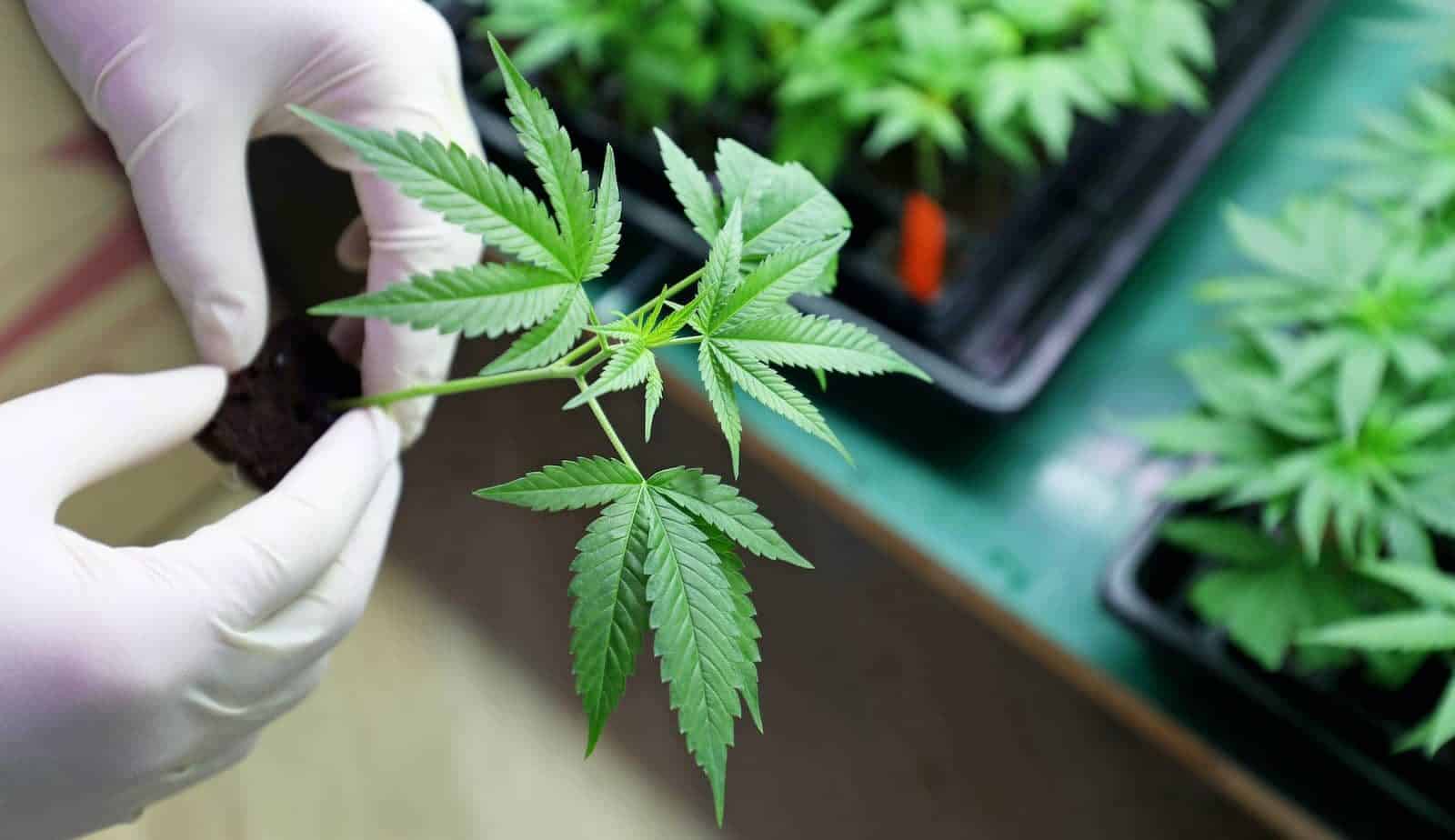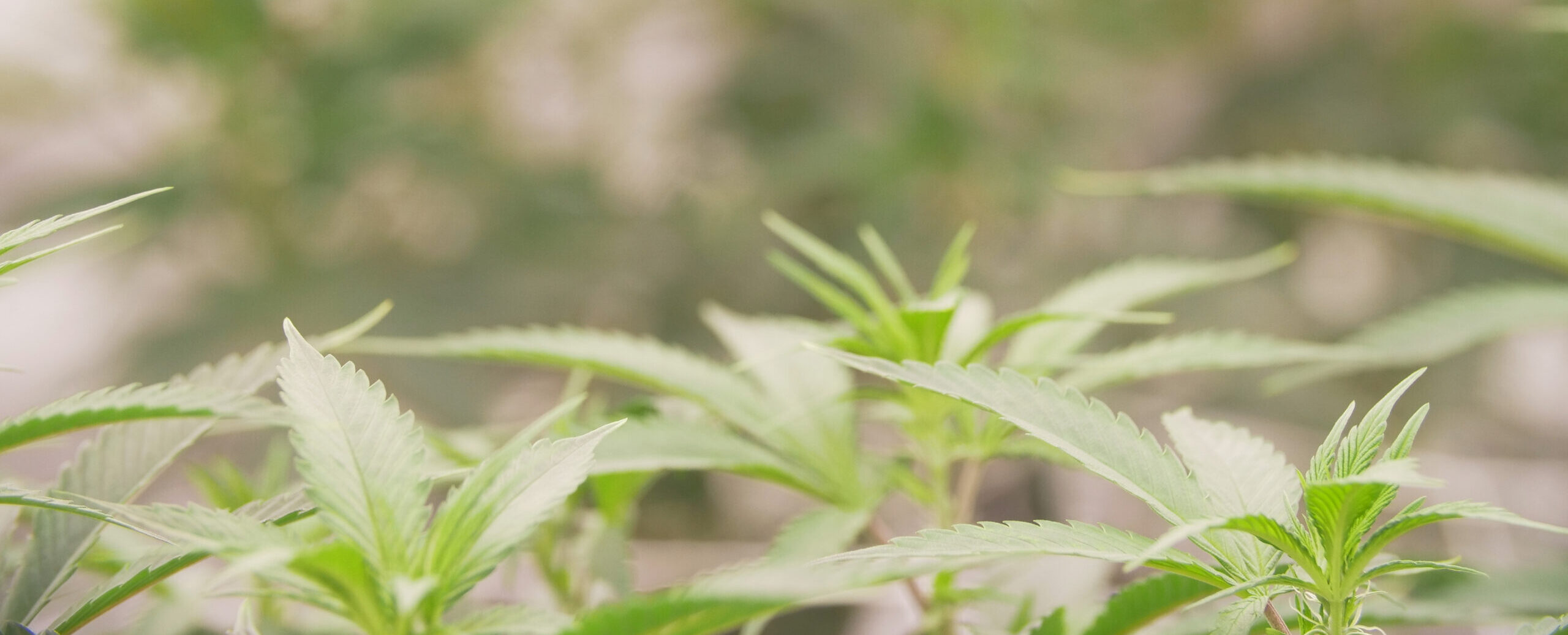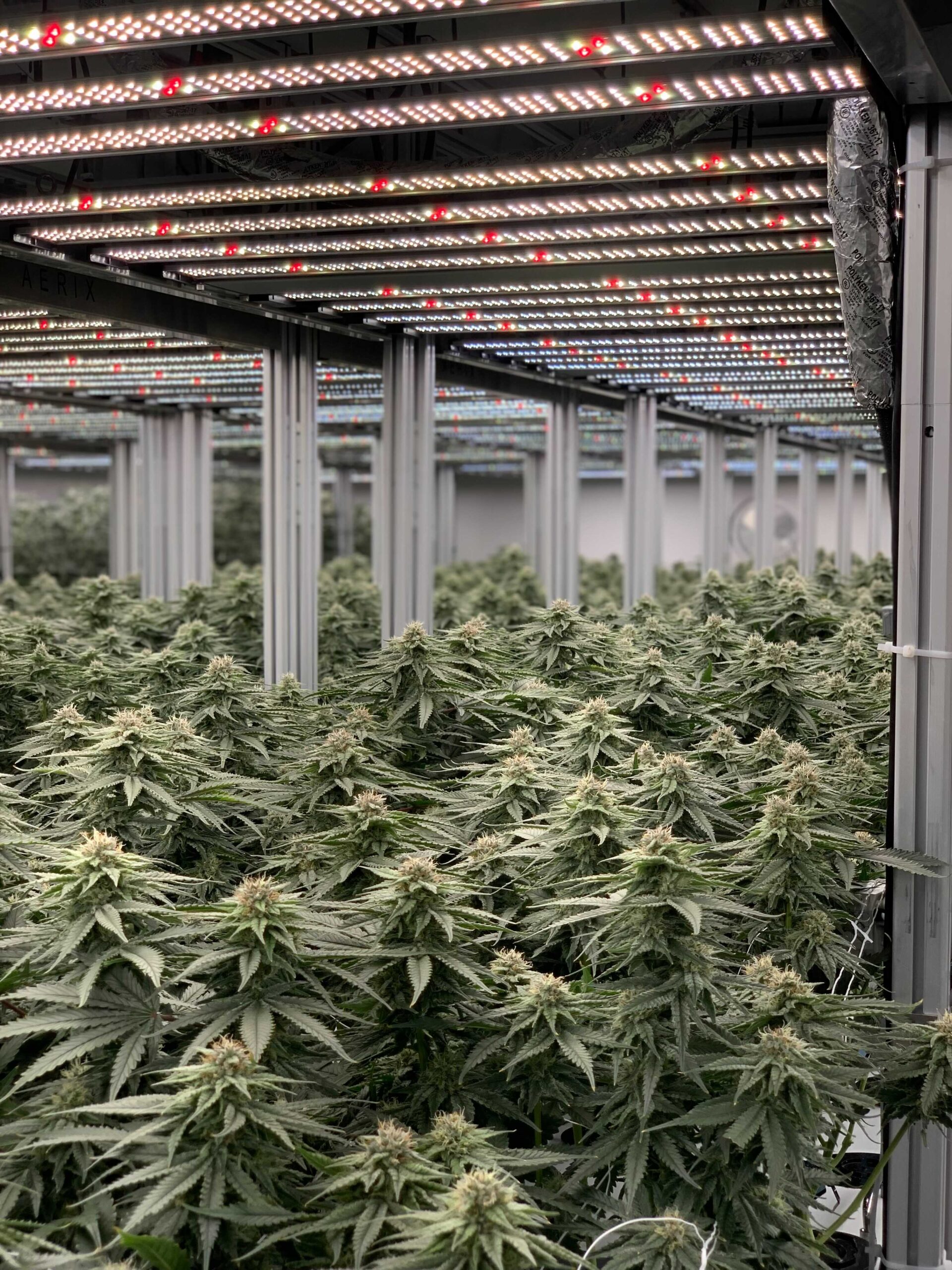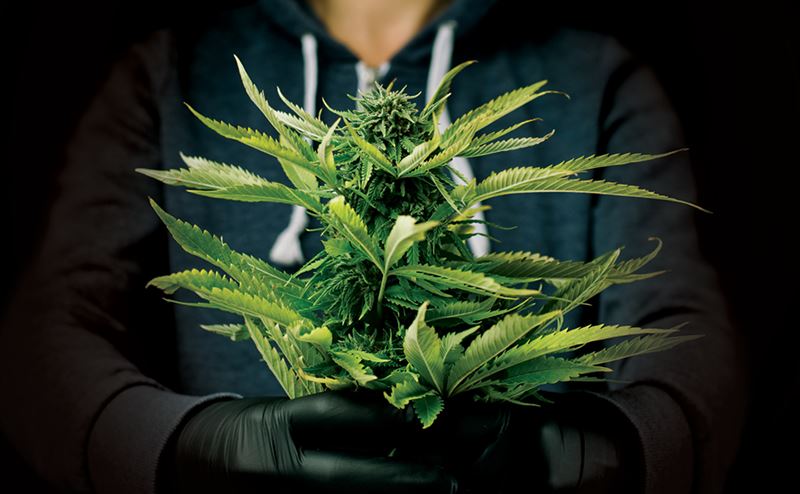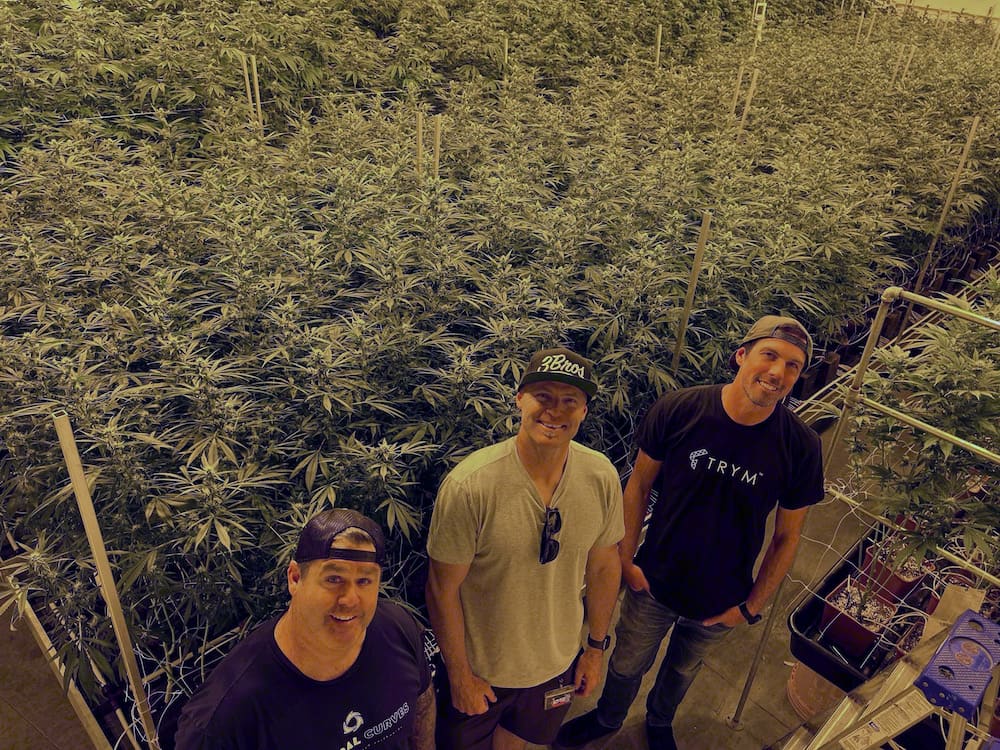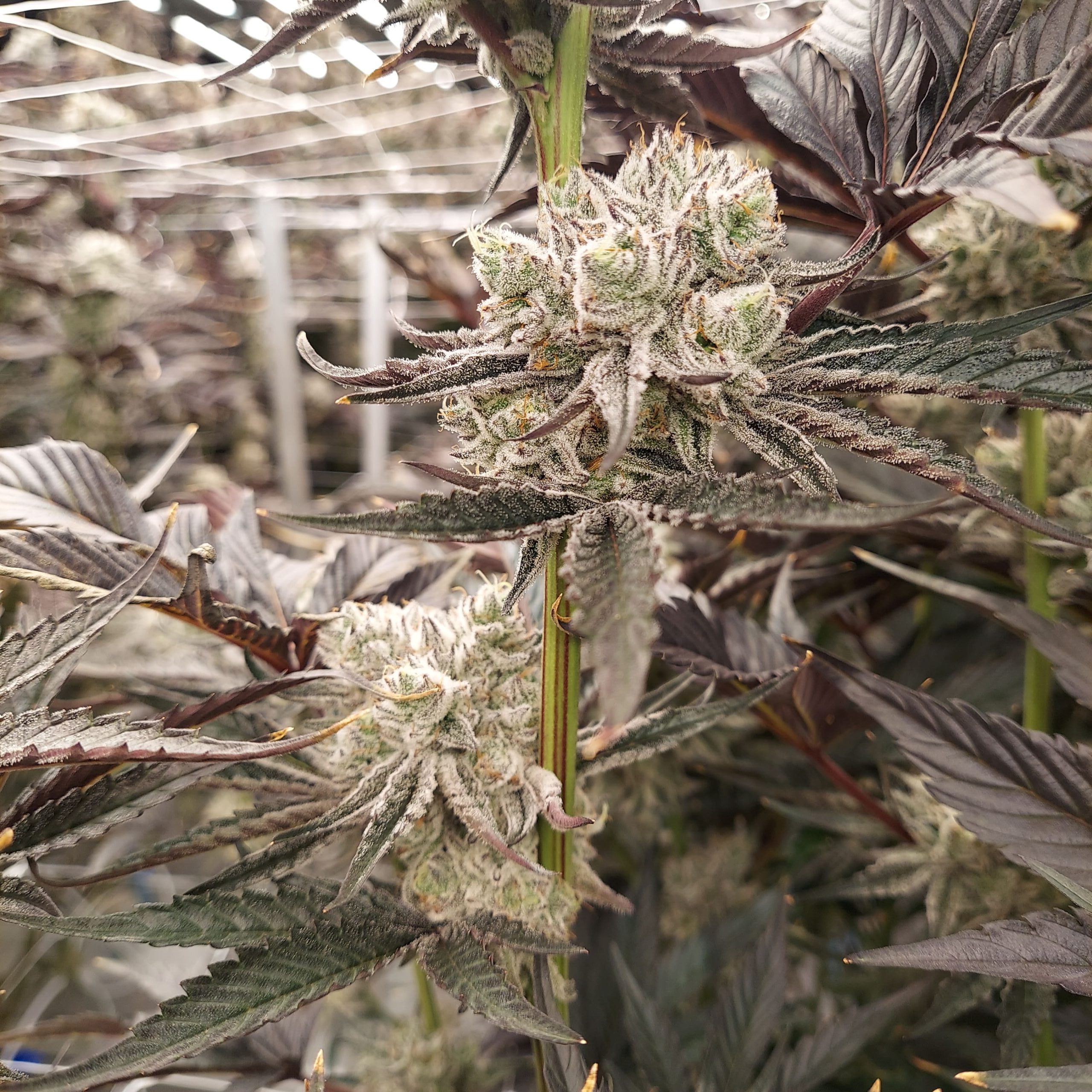How to start a commercial grow
If you’re indeed scaling an existing grow, feel free to skip this section. But, if you’re in the early stages, here’s a quick overview on what it takes to start a new commercial grow. A cannabis cultivation facility is like any other commercial enterprise. It requires a significant amount of money to get started, and plenty of perseverance to see it through. When getting into the business, it’s critical to study the best methods available to cultivate economically and effectively.
Business Plan – A business plan is a must for any commercial cannabis grow. It will help you stay on track, and ensure that you allocate your resources in the most efficient way possible. The plan should include:
- Your business goals
- Overview of your cultivation process including security, compliance, removal of waste, logistics and production processes
- Projected costs and revenues
- Marketing strategy
- Organizational chart
Facility – The decision to grow indoors, in a greenhouse or outdoors will determine your facility location and setup. Prepare the facility design plans and the list of equipment, hardware and supplies you’ll need to operate. Some products have a long lead time, so factor that into your timeline.
Compliance – Operating as a licensed cannabis cultivator requires you to stay in full compliance with the state track-and-trace system (Metrc, Biotrack, Leaf Data Systems). Designating a team member to act as the compliance officer will ensure ownership of this requirement for operating. Create your Standard Operating Procedures (SOPs) for compliance reporting. And if you seek to automate compliance through cannabis software like Trym, get your team trained and proficient before you put the plants in the ground.
Financing – Commercial cannabis growers need to budget their money and plan for the initial start-up costs. If you don’t have the capital to cover these costs upfront, you can explore financing options. There are a number of lenders who specialize in providing loans to cannabis businesses. Be sure to research your options carefully and compare interest rates and terms before signing any contracts.
Let’s Talk Scaling
Cannabis entrepreneurs are seizing the widening opportunities in new and established medical marijuana and adult-use markets. People from all walks of life, first time business owners to serial entrepreneurs to venture capitalists, are getting in on the Green Rush. And given that today, we’re pre-federal legalization in the U.S., establishing a foothold is a priority and driver for all.
While cannabis sales have increased on average, from this year to last, competition and total supply have as well. Entrepreneurs are quickly learning that the cost of doing business in the cannabis industry is much higher than they initially thought.
If you already operate a commercial cannabis cultivation business and are considering expanding operations, this endeavor must be done strategically. It’s essential to do the proper research and take the correct steps to scale a business, achieve revenue goals and sustain in new markets.
The tides are changing, new opportunities are forming

In a recent Pew poll, 67% of Americans believe adult-use cannabis should be legal, and 91% support legalizing medical marijuana.
Opposition to cannabis legalization has fallen from 52% in 2010, to just 32% as of November 15, 2019. So what does all this data show? That cannabis is a wave overtaking this country and it’s here to stay.
Early cannabis market players in states like Colorado, Oregon, Washington, Michigan and California who established their foothold, are now making their claim on emerging markets that have recently turned ‘green.’
Scaling cannabis businesses must build up their processes to a point where they can replicate their operation. From submitting a thorough, winning cultivation license application, to writing the collection of SOPs necessary to comply and run a highly regulated medical marijuana business.
In some ways, scaling up is easier than starting the first business. Once you develop and refine the operational structure and the company’s assets, then it’s much less effort to replicate them across licenses. Bear in mind, differing state and local regulations demand changes to your procedures. Of course, if you’re expanding from cannabis cultivation to include manufacturing, then you’ll need to start from square one and define the foundation for the new, manufacturing arm of your business.
Regulations & Laws To Be Aware Of
When the time comes to scale your marijuana business, the first step is to evaluate the regulatory landscape. Regulations will vary from state to state, and sometimes city to county. A medical marijuana business model can differ from adult-use cannabis, so taking stock of the specific cannabis laws in the particular location is important.
Begin by researching the state’s residency and ownership requirements. Some states also require proof of adequate financial resources, which can prove prohibitive to some. In the complex and ever-changing regulatory landscape, it pays to have an experienced, tapped-in cannabis attorney on your side.

Consider how difficult, if not impossible, it was for out of state investors to enter the early Colorado market due to restrictions imposed by the state’s cannabis law. That all changed on November 1, 2019 with the signing of Colorado House Bill 1090. The floodgates have since opened to new investment and acquisitions from out-of-state investors.
Keeping a beat on the regulatory environments across the US will help you identify and prepare for your next move, if expanding into another state is what you’re after. For many, keeping operations close to home allows you to keep a closer eye on things.
These are two different ways to scale your business and they require different strategies. It’s up to you to decide how you want to grow. As federal legalization looms, capturing market share is becoming imminently important.
Best States for Scaling a Commercial Cannabis Business
What’s the best state to scale your cannabis business? Well, it depends on the type of entrepreneur you are. Should you scale your business into an established market or compete for one of 10 cultivation licenses in a new state? Some states transition and open up licensing from restricted applicant requirements to the general public. Michigan has done just that in 2021, and is now seeing an influx of entrepreneurs from outside the state. Getting a Michigan cultivation license, or a state in a similar position, might make for a strategic play.
Define your objectives, then perform the necessary research to itemize the pros and cons of each.
As of this date, cannabis is legal in 11 states for adults over the age of 21, and 33 states have medical marijuana programs. Established cannabis businesses might want to consider these fresh new markets as well as set their sights on those coming online in the near future, like Arizona or Nebraska.
Expanding into more established markets like California, Washington, Oregon and Colorado has its benefits. Consumers are more mature in these states and the demand for cannabis has grown. When a state goes legal, it takes time for people in that state to shed their stigma and evolve into consumers. Remember, this is a brand new market in most places and people need time to embrace the new.
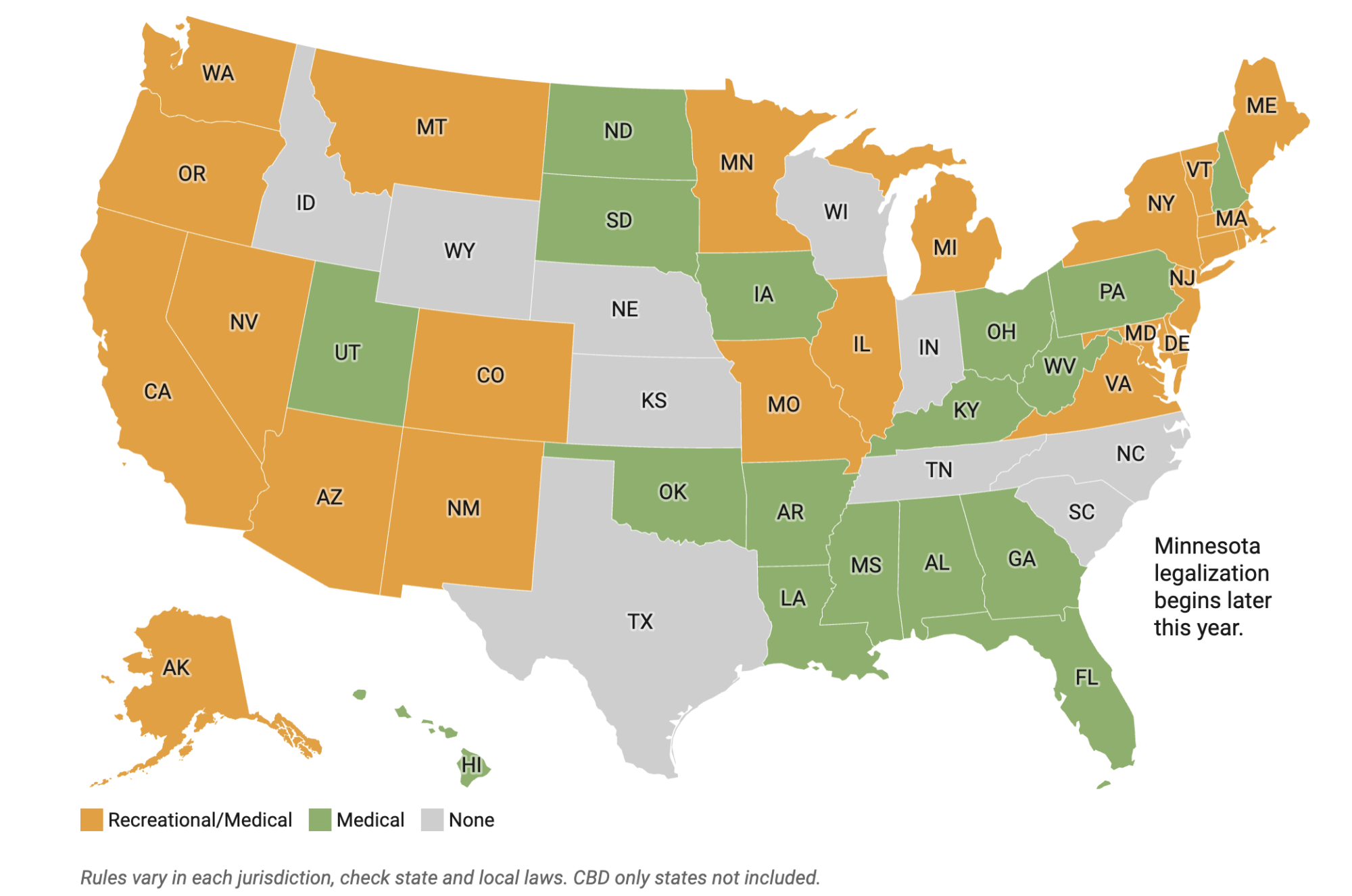
Investing a lot of money into starting a marijuana business when there is not enough demand to meet your yearly objectives may not make for the best strategy. On the other hand, if you have the capital to wait it out and are thinking long term, claiming your stake in a brand new market might be the best move. In that case, you’ll need a stand up team to help you win over the state licensing authorities.
Taking Steps Forward
Whether you decide to apply for a new license in your existing state or in a new, emerging market, your license application will already be leaps and bounds ahead of some competition. Presenting your experience and strategic plan brings confidence to the decision committee. They want to know that their program will be a success and that the businesses they select will launch and provide the tax dollars that the budget plans for.
Another way to scale, especially as the cannabis market matures, is to acquire or invest in an operating, yet struggling business. Recognize that just because someone owns a commercial grow operation now, doesn’t mean that they’re good at running it. Begin networking with others in the industry to start uncovering the possibilities. LinkedIn is a great place for cannabis networking as are industry events.
There were many early entrants who had the money and enthusiasm, but little business acumen. Coupled with difficult market and regulatory conditions, many of these businesses have begun to participate in mergers and acquisitions
These businesses that can’t sustain provide a launchpad from which to expand your commercial cannabis growing activities. And, your capital and expertise can provide them with the lifeline to keep wheels turning and save them from going out of business.
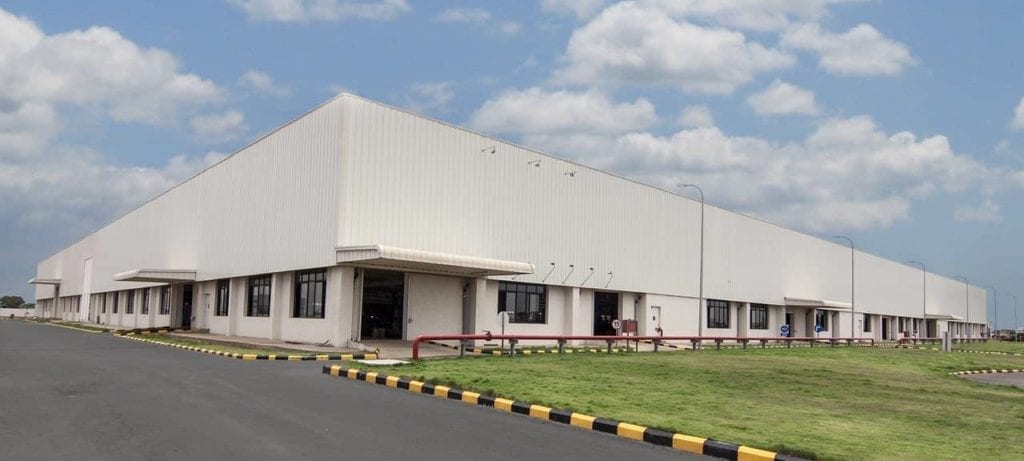
Analyze Your Business Structure
To do business in another state requires registering and acquiring a business license in that state. So, a multi-state cannabis company naturally has a more complex corporate structure.
The benefit of setting up separate entities is that your organization has better protection and risk mitigation. If one business in the group experiences a product recall or, worse, is sued, the others are not dragged down. Many cannabis companies choose to incorporate under a holding company, or umbrella, that manages the licensed entities underneath it or simply acts as an investment vehicle.
In states where cannabis companies can vertically integrate, operators also form separate entities for each license. Sometimes they’re used for holding the brand trademark and intellectual property. Other times they’re set up as real estate holding companies.
A well thought out business structure can create incredible efficiencies across your group of companies. A solid CPA with experience in the cannabis industry can help optimize the flow of money, cannabis transfers, salaries and cost of goods amongst the companies. Additionally, consult with a lawyer well-versed in corporate structure.
Take the time to ensure you structure your business correctly from the start. Changing a complex business structure later is a greater headache than you can imagine.
Things to Consider when Scaling a Cannabis Grow Room Facility
When marijuana growers face large-scale cannabis cultivation, they may be tempted to automate everything in their grow rooms out of the gate. New equipment, lights, and sensors to monitor Electrical Conductivity (EC), etc. One piece of advice we consistently hear from successful multi-state cannabis operators is that the more variables you keep constant, the more consistent your results will be.
Keep your feeding schedule the same, use equipment that you’re familiar with, and tend to the cannabis plants as you always have. Small variations can have big impacts on your commercial cannabis grow results.
That being said, these are areas cultivation operators tend to update when scaling their grow:
- Irrigation
- Fertigation to optimize nutrient uptake and avoid nutrient burn
- Environmental monitoring & climate control
- Team management
- Compliance reporting
You might consider a commercial cannabis cultivation software that can help you manage many of these processes and provide the valuable data needed to streamline and optimize further. Leveling up by incorporating technology in this way is the easiest way to introduce management and oversight as the number of grow rooms multiplies.
Collecting data from all the cannabis cultivation facilities will provide massive amounts of data. Software turns that data into actionable insights. For instance, one can identify the exact conditions that a certain genetic needs to thrive. Then, by replicating those successful parameters, a profitable, scaling business model can take shape.
When you set out to scale, you have to have a data-driven approach. Think of it as your competitive edge in an increasingly competitive industry.

Ways to Lower Costs as You Scale
Tax Strategy
The federal tax guidelines do not look kindly upon cannabis. If you’ve heard of 280E, you know exactly what we’re talking about. To sum it up, cannabis businesses don’t get to deduct standard business expenses beyond their COGS. This makes achieving profitability much, much harder. And it’s one of the biggest things overzealous investors underestimate.
There are strategies to structuring licenses and entities, as well as ways to track employees’ time to be able to show that a portion of the non-deductible expenses actually went towards producing the goods.
When comparing types of cannabis licenses across the supply chain, cannabis grows get away with the most allowable deductions. As we move up the supply chain, to retail, less and less expenses are deductible. Retailers and distributors have strategies in place to leverage this fact by including a manufacturing license into the mix that helps offset a lot of labor and material costs on behalf of the group.
A CPA who’s well-versed in structuring for tax savings in the cannabis industry is invaluable. There are safe ways to do it and other strategies that are now outdated and risky.
Producing at Volume
One area that quickly becomes costly is clone production. Transitioning from clones to tissue culture might be worth considering if propagating thousands of clones at your cultivation facility.
For those wanting to preserve the exact genetic makeup of a cannabis strain, clones have been the go-to choice. Whether cannabis cultivation facilities take clones from mothers onsite, or purchase the exact amount of clones for each round, the cost of growing from clones is quite high on a large scale.
Tissue Culture
Tissue culture propagation, also known as micropropagation, is rising in popularity. Sterile conditions and a combination of ingredients to enable cannabis plants cell growth are the keys to successful propagation.
Tissue culture propagation is prolific. Calculations comparing tissue culture to clone cutting show an incredible increase in volume and efficiency. A cannabis cultivation facility that can produce 66,00 clones per year from cutting can yield 2.4 million seedlings when using micropropagation methods.
A tissue culture lab will require skilled labor and high setup costs. The cost of transitioning to micropropagation should be financially justified by the increase in volume of cannabis production. Obviously, this only applies to companies with operations in one state, since cannabis, at any stage of growth, can’t cross state lines.
Vertical Farming
Another trend we’re seeing in the industry as cannabis cultivators scale is the turn to vertical, energy efficient, LED grow lights systems.
Vertical racking systems allow cultivators to utilize more space in their indoor grow facilities without sacrificing square footage. The investment into this kind of system can produce twice or three times as much cannabis in the same indoor grow facility. And the energy cost savings from the efficient grow lights setup lowers the total cost per gram of cannabis production. An investment into this facility design can pay for itself rather quickly.
Check out Pipp Horticulture’s yield calculator where you can plug in your specs to see what the potential increase looks like by going vertical in your indoor grow.
Software To Improve Efficiency and Consistency
Studies have shown that labor accounts for nearly two thirds of commercial cannabis cultivation costs. Software has the power to automate certain processes and save labor hours. When chosen, implemented and adopted correctly, it can greatly increase company efficiency.
The first step in cannabis software evaluation begins with identifying the company’s challenges that automation can address. Aligning with internal stakeholders on the needs and goals is the foundation from which to evaluate a new software product.
General use software, as well as cannabis-specific software, offer a myriad of opportunities for automating redundant, time-consuming tasks. Contrary to popular belief, there’s no one size fits all solution. Especially in the cannabis industry.
Vertical Integration is Complex
Experienced cannabis operators know that things are a little different than in other industries. The complexities of running a vertically integrated business are many, no matter if it’s a recreational or medical cannabis business.
A vertically integrated business is in practice a number of separate and distinct businesses operating under one umbrella. One business alone has countless headaches to address. Software that can help unify the various departments (operations, finance, management, compliance) would do wonders to prepare the business for scaling.
Stacking additional businesses in the vertical supply-chain, (ie cannabis cultivation, manufacturing, distribution and retail) presents uniquely challenging business requirements and added layers of complexity that software can help solve.
There are traditional software tools like Asana and Slack for project management and internal communication. And there are industry specific tools like Trym that can implement Metrc compliance automation as well as team and task management.
Product Quality as You Scale
‘Scaling too fast’ is a commonly heard expression in the startup world. There are many reasons why startups fail. Service of product quality tends to suffer when management shifts their focus on aggressive growth. Less attention is spent on employees, daily operations plans and customer service.
Great product falling into average product territory could mean a loss in profits. Slipping quality can hinder efforts to scale. Your cannabis grow is only as profitable as your product is desirable. Remember, keeping variables constant (to the best of your abilities) is important to not compromise on product quality.
Consistent Cannabis Production
Producing a consistent product remains one of the biggest challenges for cannabis cultivators, especially for medical marijuana producers. Patients need a predictable outcome every time they consume medicine, and historically when it comes to cannabis, no two ‘doses’ are identical.
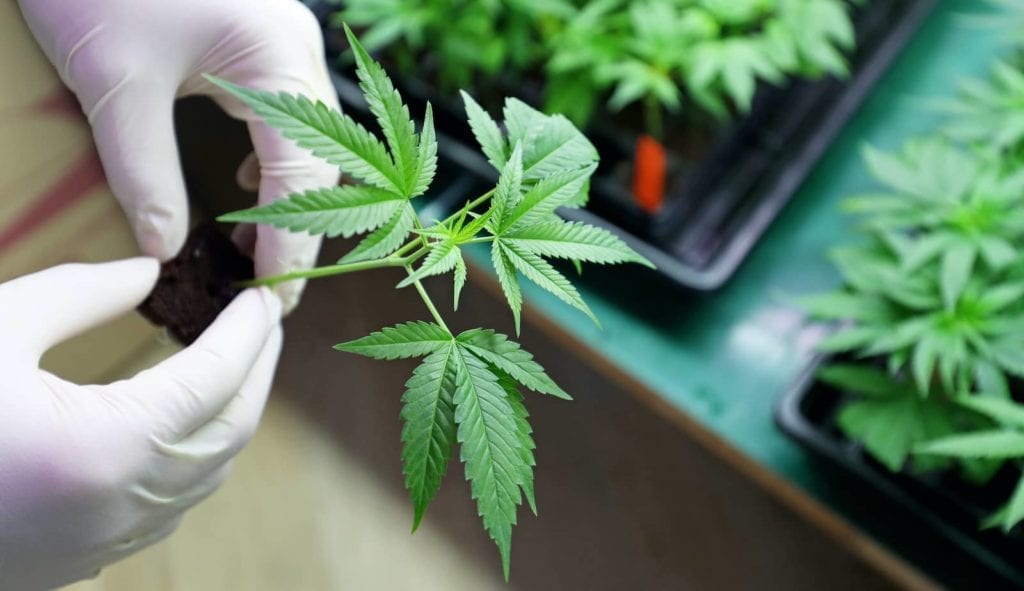
Additionally, with the rise in recreational cannabis sales, the industry has seen a meaningful increase in new consumers. As people explore the vast market of cannabis products, ensuring their experience is pleasant, measurable and repeatable is essential to retaining their business.
Beyond customer experience, cannabis cultivation businesses need to be able to consistently predict yields, keep production costs down, and keep the team firing on all cylinders in order to be successful.
Standard Operating Procedures
A cultivation SOP is essentially a document in which a specific process and workflow is outlined, step by step. Simple in concept. But, in reality, SOPs end up being a lot more labor-intensive to produce and maintain than one might think. However, the effects of having a well documented system for achieving consistent, high quality cannabis production are worth the effort.
SOPs help to ensure things are done the same way each time to limit the variables that produce unexpected outcomes. For example, a cultivator might want to set a range to stay within for their soil runoff. If a test results in a value outside the specified range, the team turns to another SOP to correct the drift. Tracking metrics like this, along with climate control data points, will ensure product consistency on a large scale. SOPs are critical to scaling a business in which oversight and consistency become monumental.
Team Work Makes the Dream Work
Without a skilled and well-trained team, your product quality and consistency will surely suffer. It all starts with proper vetting and hiring.
Take stock of the increase in production and the goals you’re trying to achieve. How many new roles need to be filled in order to establish a solid leadership team that ensures execution of your plan? Do you need one head of operations across all facilities or a head of operations at each location? Strategizing on your team structure ahead of time will save you many headaches down the road. Without the right people in the right positions, the scaling initiative won’t take off the ground.
Working with a recruiter dedicated to the cannabis industry can prove handy when you’re looking for a very specific set of skills and experience.
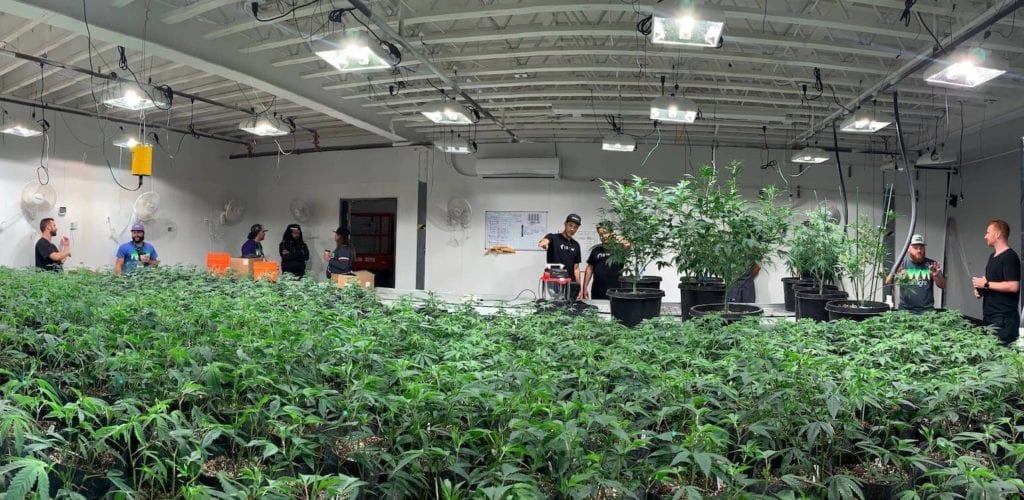
A thorough training process will empower your employees to ramp up quickly and feel supported while doing so. Define and prepare your onboarding process so that you can implement it across your new business units as you scale your indoor grow operation.
Open communication channels are important for a business that wants to multiply in size. Without clear directives, expectations and responsibilities, things can quickly turn into a mess. Luckily, there are numerous tools to assist teams in their project management and communication needs. Apps like Slack for communication and Trym for task management give managers oversight so they can quickly catch and address issues. Additionally, having a well-organized company asset library that’s easily accessible in the cloud can have a big impact on efficiency in the team.
Marketing & Branding
Many grow operations in the cannabis supply chain operate as wholesalers and don’t deal with consumers at all. They spend less effort and energy on branding and marketing as a result. However, even in a B2B business, a cannabis marketing strategy is what’s shaping public perception and relationships with customers.
When it comes to scaling into multiple locations, into different regional supply chains, states or countries, having a strong brand identity weaves a thread of consistency and recognition. Building a brand is all about developing and sustaining your market presence over time.
Some things to consider:
- Does everyone in your organization know the company’s mission statement? What about the key value statement for your brand or product(s)?
- Review all your marketing assets, including website, brochures, sales materials, and all outward messaging
- Ensure consistent brand guidelines across the organization. Don’t overlook the small details like the email signature for each employee or their LinkedIn bio. The way your company presents itself is the way it wants to do business.
- Build street cred. If you’re expanding operations into a new area, make sure to show up for industry events, both political and social ones. Becoming part of the community, wherever your company is based, will do wonders for your business growth and success.
Never Stop Growing
As a business owner or manager scaling their business and cannabis production, make sure you don’t forget about nurturing yourself. Take time each year to focus on your personal growth and professional development. The best leaders have taken courses and received many coaching sessions to get to where they are today.
Check out this great video of Stanford Professor Bob Sutton. He shares principles from his most recent book, Scaling Up Excellence. Sutton explores why scaling is about spreading and sustaining a mindset, not just a footprint.


